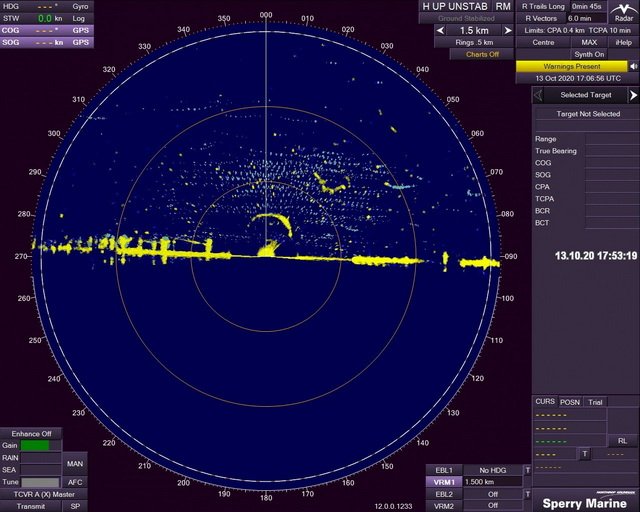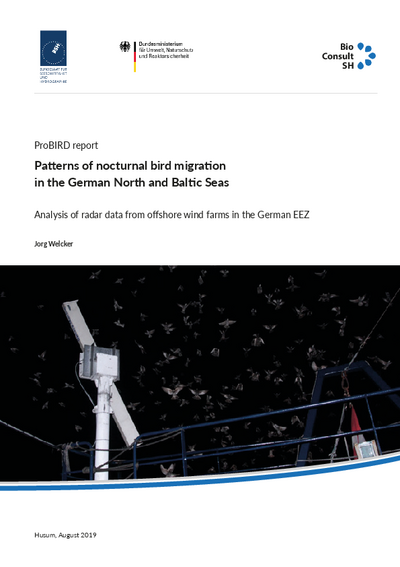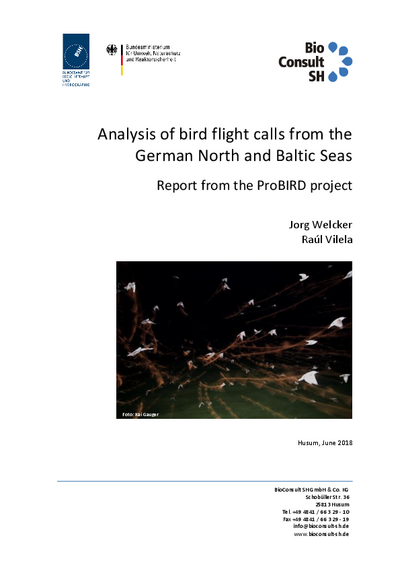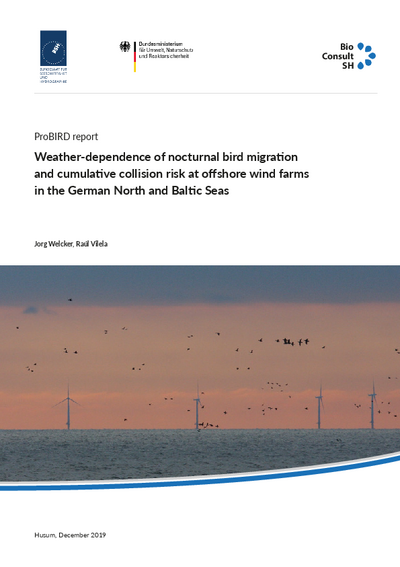ProBIRD
Aim of the project was to estimate possible risks for migrating birds to collide with offshore wind farms. In addition, models were developed to predict the risk that birds collide. These models were used to work out criteria, which may possibly serve as a basis to minimise or even avoid impacts.
Conflict between nature conservation and further development of offshore wind energy use
A large number of birds migrate across the German part of the Baltic and North Seas on the way from breeding areas to wintering areas and back. The majority of these birds, passerines above all, migrate during the night. In the German Exclusive Economic Zone (EEZ), collisions of birds with wind turbines are usually considered a major conflict between nature conservation and further development of offshore wind farms. So far, only little information is available on temporal and spatial migration patterns in the offshore area. It also remains unclear to what extent migrating birds collide with offshore wind turbines.
Project objectives
- To describe bird migration in the German EEZ of the North and Baltic Seas with a particular focus on spatial and temporal variation and existing gradients (e.g. distance from coast)
- To model intensity of bird migration and flight heights depending on the prevailing weather conditions
- To develop a prediction model of bird migration in the rotor area based on weather parameters
- To estimate the cumulative risk for birds to collide with offshore wind turbines
- To work out criteria that may serve as a basis to develop and initiate measures to reduce or even avoid bird collisions
Methods
The present study summarises and evaluates data of accompanying surveys of wind farm projects in the North and Baltic Seas for the first time. Data collected at 13 different locations in the German Exclusive Economic Zone (EEZ) over a period of nine years were evaluated.
- Data of radar surveys were used to determine flight height and migration intensity. Radar devices were used to record bird migration up to a height of 1,000 m. This method does not allow identifying the species of recorded birds.
- Flight calls of selected species recorded in 13 wind farms were therefore analysed. Many bird species have specific flight calls. The number of calls is not necessarily proportional to the number of birds. Even so, evaluation of flight calls is the only available method to obtain information on nocturnal flight activity of single species.
- Weather data were included additionally, to investigate the influences of weather conditions on bird migration.

© BioConsult SH
Nocturnal bird migration on a radar screen.
Results
Based on radar data, the total number of birds crossing wind farms in the German EEZ per year during spring and autumn migration was estimated to amount to just under 100 million. Approximately 24 million thereof were recorded in the rotor swept area. Despite the high level of uncertainty, this estimate shows that flight movement in the wind farms of the German EEZ will be in the eight-digit range.
Among other things, the results reveal that bird migration highly depends on weather conditions. Wind conditions and especially tailwinds proved to be the meteorological factor with the strongest influence on migration and flight call intensities. Migration intensities clearly increased with increasing tailwind. In autumn, birds are more likely to tolerate moderate headwind conditions. High call activities of migrating birds were not only recorded under favourable migration conditions, but also in adverse weather conditions (e.g. rain, poor visibility).
Models resulted in an estimated total number of 8,000 – 35,000 nocturnal migrants colliding with wind turbines in the German EEZ per year (development state as of 2000). In relation to the estimated total number of birds crossing the North and Baltic Seas at night, this equals around 0.03 % (North Sea) or 0.002 % (Baltic Sea) of all individuals migrating per year. This can only be a rough estimate, since both the total number of birds migrating at night as well as the modelled number of collisions are highly uncertain.
Please refer to the following documents for further information on the project and a detailed description and discussion of the results:
Papers and reports
Analysis of bird flight calls from the German North and Baltic Seas. Final Report – June 2018
BioConsult SH, Husum
Further information
Carried out on behalf of
Federal Maritime and Hydrographic Agency (Bundesamt für Seeschifffahrt und Hydrographie)

Funded by
Federal Ministry for the Environment, Nature Conservation, Nuclear Safety and Consumer Protection (Bundesministerium für Umwelt, Naturschutz und Reaktorsicherheit)

Project duration
until end of 2019
Funding ID
FKZ UM15 86 2000





